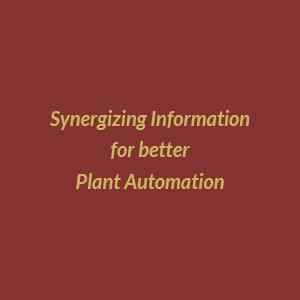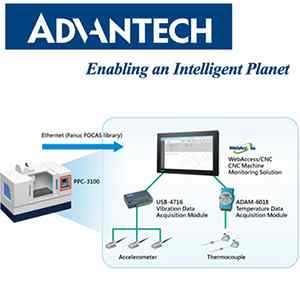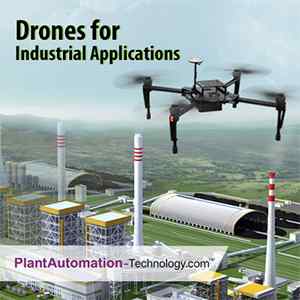Synergizing Information for better Plant Automation

The automation industry is extending beyond simply providing business systems with data by synergistically using information to combine in new ways to make plants more profitable, effective and efficient. Synergy can be explained as two or more things functioning together to produce a result not independently obtainable. In the natural world, for example, hydrogen and oxygen combined make water.
This takes teamwork between automation and business systems to produce a complete result than could be accomplished with each working alone. Traditionally both groups have worked in isolation.
Today's technology offers innovative ways to approach plant automation and control issues. To take advantage of technology, you need a partner who understands how to apply it to your needs.
Automation is the use of control systems and information technologies to reduce the need for human work in the production of goods and services. In the scope of industrialization, automation is a step beyond mechanization. Whereas mechanization provided human operators with machinery to assist them with the muscular requirements of work, automation greatly decreases the need for human sensory and mental requirements as well. The term automation, inspired by the earlier word automatic (coming from automaton), was not widely used before 1947, when General Motors established the automation department. The old focus on using automation simply was to increase productivity and reduce costs was seen to be short-sighted, because it is also necessary to provide a skilled workforce who can make repairs and manage the machinery. Moreover, the initial costs of automation were high and often could not be recovered by the time entirely new manufacturing processes replaced the old. Automation is now often applied primarily to increase quality in the manufacturing process, where automation can increase quality substantially.
Another major shift in automation is the increased demand for flexibility and convertibility in manufacturing processes. Manufacturers are increasingly demanding the ability to easily switch from manufacturing Product A to manufacturing Product B without having to completely rebuild the production lines. Flexibility and distributed processes have led to the introduction of Automated Guided Vehicles with Natural Features Navigation.
Engineers now have numerical control over automated devices. The result has been a rapidly expanding range of applications and human activities.
Computer-aided technologies (or CAx) now serve the basis for mathematical and organizational tools used to create complex systems. Notable examples of CAx include Computer-aided design (CAD software) and Computer-aided manufacturing (CAM software). The improved design, analysis, and manufacture of products enabled by CAx has been beneficial for industry.
Information technology, together with industrial machinery and processes, can assist in the design, implementation, and monitoring of control systems. One example of an industrial control system is a programmable logic controller (PLC). PLCs are specialized hardened computers which are frequently used to synchronize the flow of inputs from (physical) sensors and events with the flow of outputs to actuators and events.
Different types of automation tools developed till now:
- » ANN - Artificial neural network
- » DCS - Distributed Control System
- » HMI - Human Machine Interface
- » SCADA - Supervisory Control and Data Acquisition
- » PLC - Programmable Logic Controller
- » PAC - Programmable automation controller
- » Instrumentation
- » Motion control
- » Robotics
GE Intelligent Platforms is one of the leading companies in the automation at control domain:
GE Intelligent Platforms (IP) is a business of GE that provides hardware, software, services and expertise in automation and control technologies. Their solutions find wide applications in industries as diverse as Energy & Power to Oil & Gas, Metals & Mining, Consumer Packaged Goods, Pharmaceuticals, Life Sciences, Chemicals, Automotive, Water and Defense & Aerospace.
GE IP’s solutions include:
Control & Communication Systems
These include high-performance PLC, PAC, Motion Control Solutions, Operator Interfaces, Distributed I/Os and Process Solutions for critical infrastructure and manufacturing operations, proven to help customers maximize production uptime, enhance asset performance, and improve process safety and reliability. The solutions leverage GE’s deep domain expertise in ruggedized electronics and process control - delivering utmost reliability, open connectivity, and optimized performance in operating environments where downtime is not an option. GE also offers robust lifecycle management support to help customers seamlessly migrate from existing solutions while minimizing conversion risk.
Industrial Software
GE IP also offers Automation Software that collects, visualizes and analyzes plant data with its HMI, SCADA, Batch and Change Management solutions. GE’s Operations Management Software, Proficy™ bridges the gap between the plant floor and business systems, combining proven Workflow, Manufacturing Execution Systems, EMI, and Quality & Compliance capabilities - while leveraging a Services Oriented Architecture (SOA).
Another company, Intergraph has developed a low-risk, modular implementation called as SmartPlant® Enterprise
- » PlantState Suite© alarm management software
- » PSS Control Loop Optimization Software
- » HMI design and implementation services
Today, the technology industry has been combining web services into a wide span of devices to bring in data from various sources inturn improving operations and achieving efficiency. Examples of automation standards that leverage these computing standards include:
- » OPC Unified Architecture (OPC UA),
- » PLCopen OPC UA and MTConnect.
The only way companies could gain the benefits of integration in the past was to make significant investments in custom applications that were expensive and cumbersome. These emerging standards dramatically lower implementation cost, and improve reliability, quality and responsiveness of the systems.
An automation system provides a wealth of knowledge for improving operating efficiency since they monitor a wide range of real-time data. These are some applications where information synergy is being used to improve overall performance.
The availability of real-time information, powerful low cost computers, wireless sensors, and more powerful analytical software is enabling the creation of total plant optimization investigating an integration of automation and business systems moving beyond executive dashboards. These are advanced systems with models and algorithms to manage and optimize production in real-time using a range of factors including incoming sales orders, raw material quality and costs, energy cost and machine efficiencies.
Nowadays, companies have maintenance management systems that create work orders for preventative maintenance based on calendar time intervals, and break down maintenance orders are manually entered into the system when problems occur. By linking real-time information from automation systems, the actual status of equipment provides a direct linkage enabling predictive maintenance with analytic software to predict problems and avoid interruptions in production. In addition to lowering downtime, this also maximizes the use of skilled maintenance people who are in short supply.
The integration of automation and business systems, synergizing information, is a journey to more efficient manufacturing operations that will continue to evolve and improve Plant automation efficiencies.











